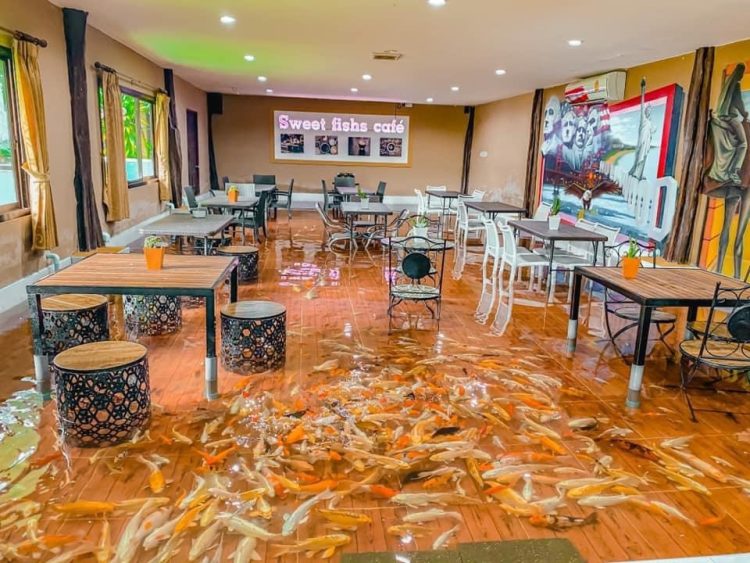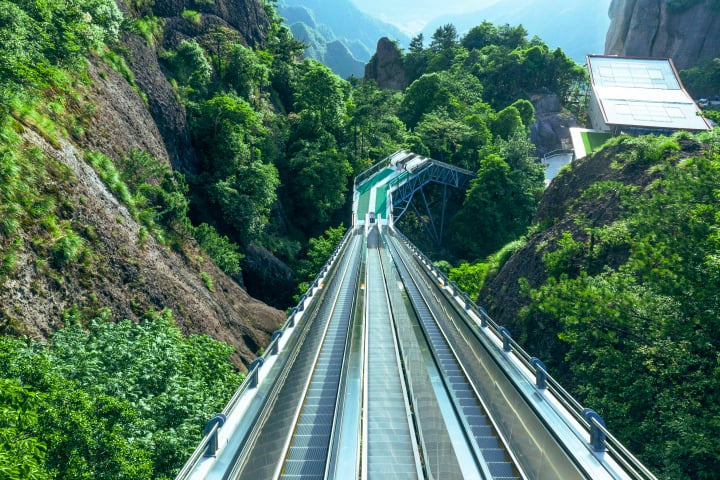Imagine a place where you can enjoy your favorite cup of coffee in the company of dozens of koi fish as they swim through ankle-deep water that covers the entire floor. That’s Thailand’s koi fish café in a nutshell.
Remember Amix Coffee, the “flooded café” of Ho Chi Minh City, where hundreds of decorative fish of all shapes and sizes lived on the water-covered floor as patrons walked among them? It drew a lot of criticism from animal rights activists and closed down after just a couple of months, but if you liked the concept, you’ll be happy to know there’s another flooded café you can visit. Sweet Fishs Café is a unique venue in the Thai city of Khanom, where people can walk through ankle-deep water populated with dozens of koi fish.





















